Get PeakVisor App
Sign In
Search by GPS coordinates
- Latitude
- ° ' ''
- Longitude
- ° ' ''
- Units of Length

Yes
Cancel
Share ×

Scan the QR code and open PeakVisor on your phone
❤ Wishlist ×
Choose
Delete
Known as the “Old North State,” North Carolina covers more than 53,800 square miles of the northeastern United States. North Carolina is bordered by Virginia to the north, Georgia and South Carolina to the south, Tennessee to the west, and the Atlantic Ocean to the east, and contains three major topographic regions – the Appalachian Mountains, the central Piedmont Plateau, and the eastern Atlantic Coastal Plain.
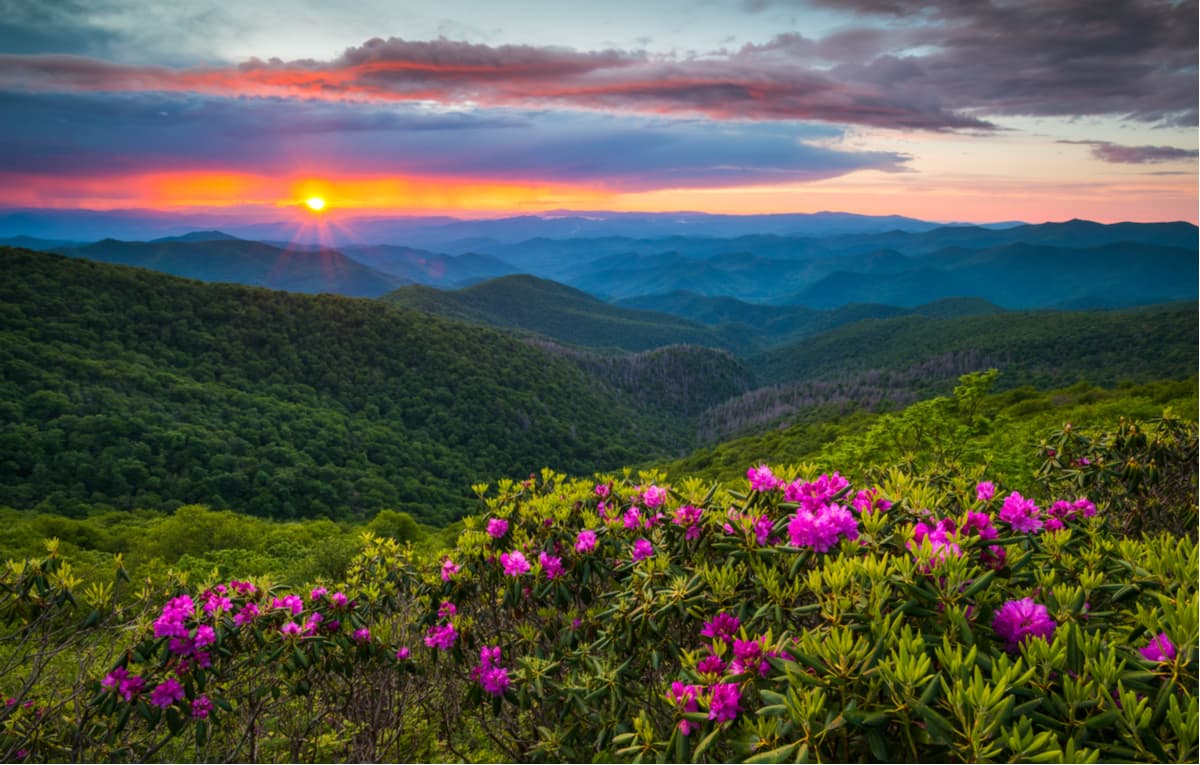
North Carolina’s mountain region contains spectacular summits tucked within extraordinary Appalachian subranges like the Great Smoky Mountains and Blue Ridge Mountains. There are more than 3398 named mountains in North Carolina, 40 of which reach 6,000 feet in elevation. In fact, the Appalachian mountain system is said to reach its greatest width and elevation in North Carolina.
The Blue Ridge Mountains, the largest mountain range in the state, extend for 550 miles from southern Pennsylvania through Maryland, West Virginia, Virginia, North Carolina, South Carolina, Tennessee, and Georgia. This set of summits span most of western North Carolina and are protected by Pisgah and Nantahala National Forests. The Blue Ridge Mountains are densely forested and native trees release isoprene into the atmosphere making these peaks and valleys appear blue from a distance. The Blue Ridge province encompasses the vast majority of North Carolina’s iconic mountain ranges, including the Great Smoky Mountains, the Great Balsams, the Blacks, the Brushy Mountains.

The illustrious Great Smoky Mountains, or Smokies, are arguably North Carolina’s best-known subrange of the Appalachian chain. This set of stunning peaks and ridges sits along the Tennessee/North Carolina border and protects 187,000 acres of old growth forest, the largest stand east of the Mississippi. The Smokies are home to Great Smoky Mountains National Park, the most visited National Park in the country, but are also considered to be the most imposing set of peaks in the eastern United States. Several impressive 5,000+ foot Smoky summits can be found along the Tennessee/North Carolina border, including Clingmans Dome, the highest point along the 2,192-mile Appalachian Trail, Mount Collins, Thunderhead Mountain, Mount Kephart, and Gregory Bald.
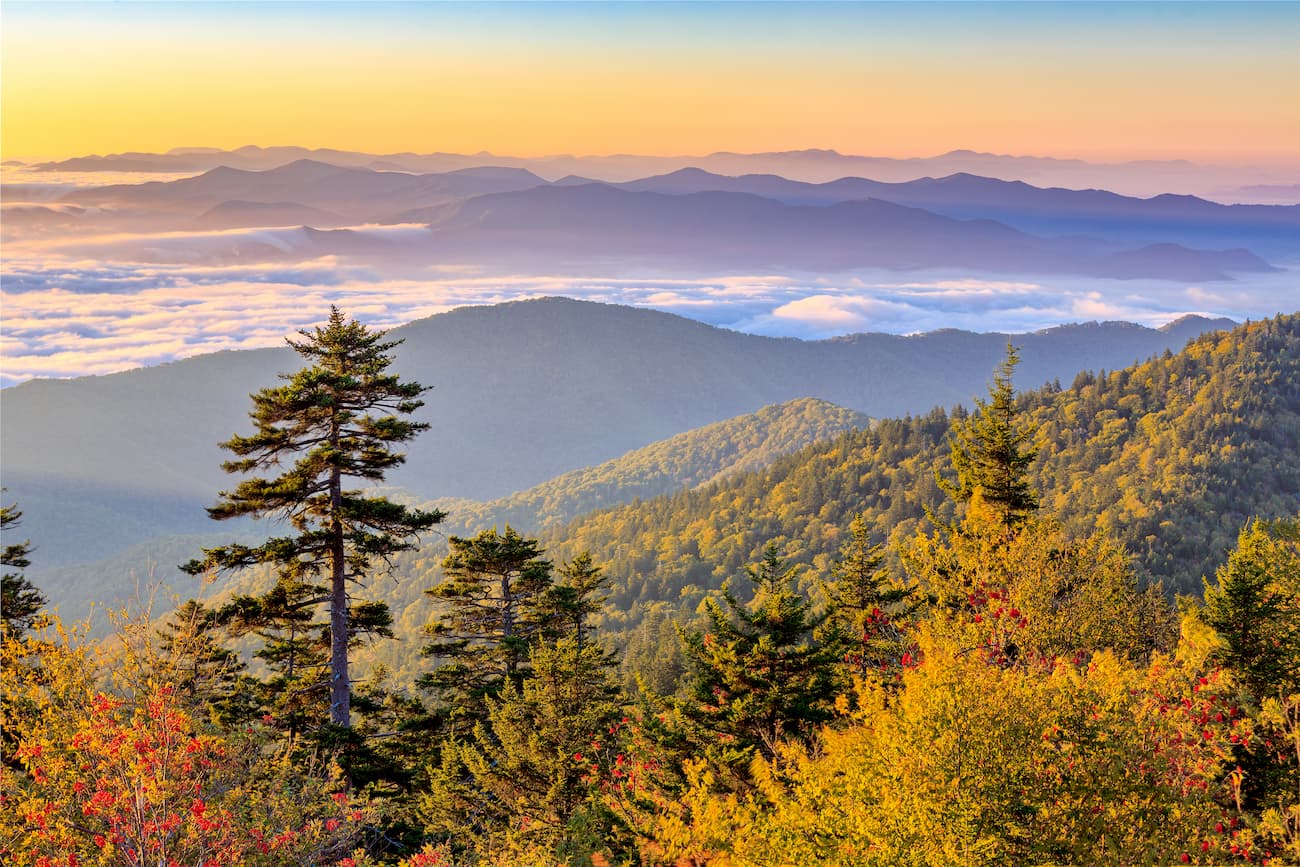
The Black Mountains, another noteworthy subrange of the Blue Ridge Mountains, contain North Carolina’s highest peak, Mount Mitchell. The Blacks extend a mere 15 miles in length but boast some of the highest peaks east of the Mississippi, including Mount Craig, Balsam Cone, Big Tom, Mount Gibbes, and Potato Hill.
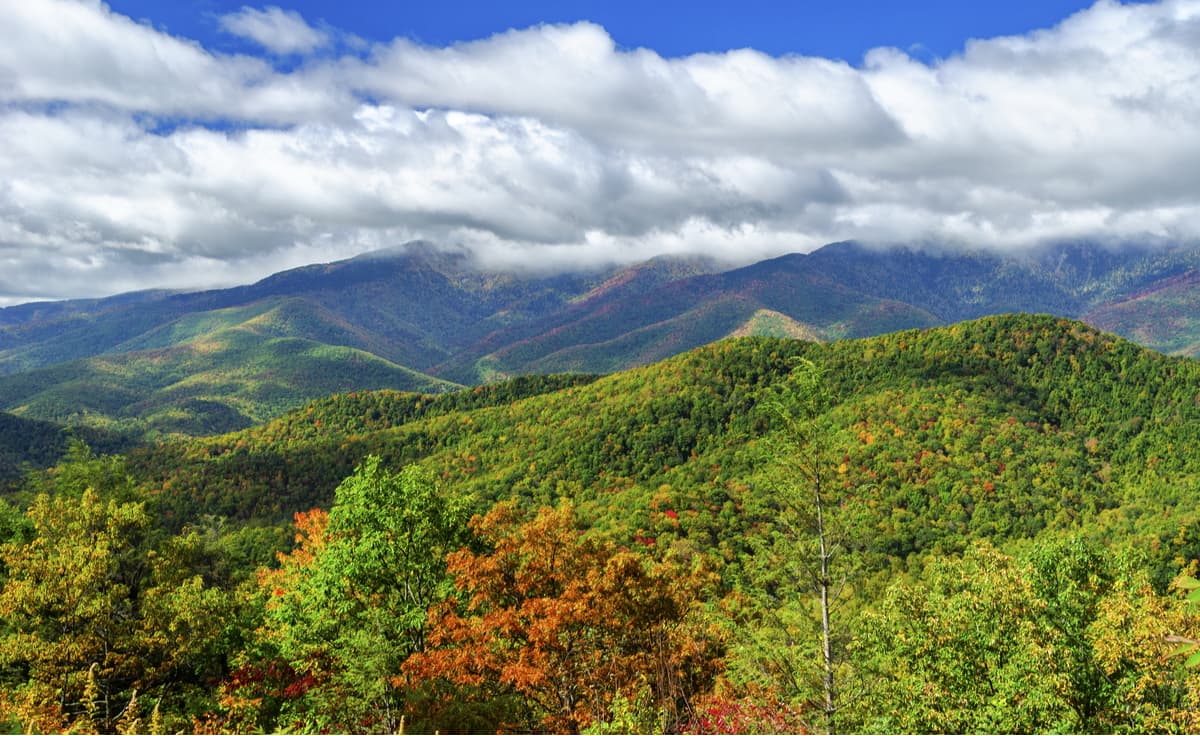
Also found within the mountain region of western North Carolina, the Great Balsams average 5,500 feet in elevation and contain several 6,000-foot peaks, including Cold Mountain, Richland Balsam, Black Balsam Knob, Mount Hardy, Reinhart Knob, and Shining Rock. The Balsams contain two designated wilderness areas and are one of the most popular destinations in the Southern Appalachians.
Located in northwestern North Carolina, the 45-mile-long, lesser known Brushy Mountains are considered an isolated “spur” of the Blue Ridge Mountains. This deeply eroded range divides the Yadkin and Catawba rivers, two of the state’s largest rivers. Unlike the Blacks or Balsams, the “Brushies” reach modest heights – topping out at just 2,667 feet at the summit of Pores Knob. Nevertheless, Brushy Mountain summits like Hibriten Mountain and Fox Mountain are all recognizable landmarks.

According to the National Park Service, achieving national park designation didn’t come easy to the Great Smokies - A fact that is hard to believe considering the park sees more than 11 million visitors a year. Great Smoky Mountains National Park encompasses 522,410 acres of the Great Smoky Mountains along the Tennessee/North Carolina border, making it one of the largest protected areas in the eastern United States. Approximately 95% of the park is forested and several impressive 6,000-foot summits are tucked within its boundaries, including Clingmans Dome, Mount Guyot, Mount Le Conte, Mount Buckley, Mount Love, and Old Black.

Popular trails in the park include Clingman’s Dome, Cades Cove, Mount Le Conte, Newfound Gap to Charlies Bunion via the Appalachian Trail, Mount Cammerer, Mount Sterling via Big Creek Loop, Abrams Falls, Chimney Tops, and Sugarland Mountain.
The park also offers over 380 miles of scenic roadway to explore. The 31-mile Newfound Gap, which connects Gatlinburg, Tennessee to Cherokee, North Carolina, is the lowest drivable pass through the Smokies and offers some of the most scenic views in the region. Several popular turnouts, including Campbell Overlook, Morton Overlook, and Webb Overlook, make this scenic drive worthwhile.
Spanning an impressive 469 miles through Virginia and North Carolina, the Blue Ridge Parkway is known as one of the most scenic drives on the East Coast and contains some of the most popular footpaths in the state.The parkway, which runs from Shenandoah National Park’s Skyline Drive to the Great Smoky Mountains National Park in North Carolina, was built in 1983 and has since become one of the most beloved attractions in the United States National Park System.
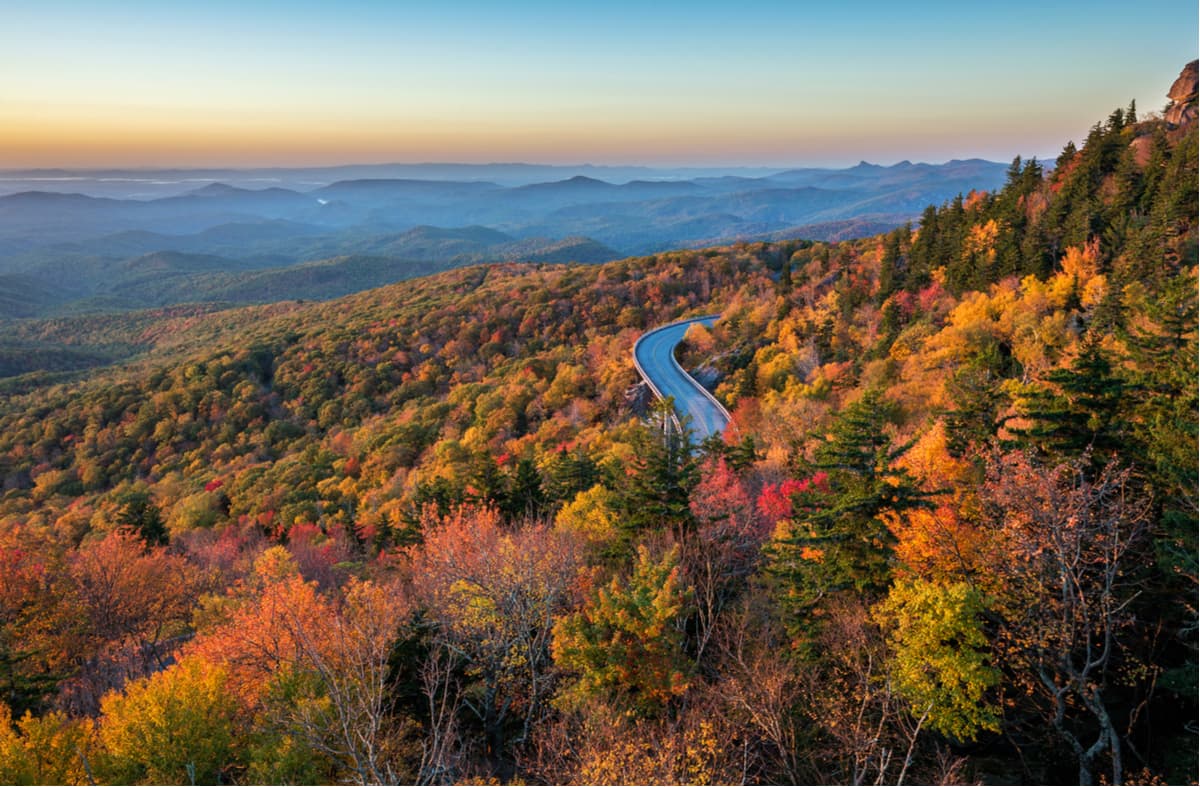
Some of the best hikes along the Blue Ridge Parkway in North Carolina include: Craggy Gardens Pinnacle, Mount Mitchell to Mount Craig (Deep Gap), Mount Pisgah, Black Balsam, and Devil’s Courthouse.
Aside from the infamous Appalachian Trail, Black Mountain Crest is arguably the best-known long-distance footpath in the southeast. The crest traverses the summit of several 6,000-foot summits, making it the highest trail east of the Mississippi. The trail begins with an arduous climb to Celo Knob, ascending a relentless 3,000 feet in just 4 miles. Beyond Celo Knob, the trail intermittently skirts cliff sides, exposed ridgelines, and requires basic rock climbing and/or bouldering skills. The effort, however, is not without reward. Throughout the trek, hikers are rewarded with sweeping views of the Black Mountains, Craggy Mountains, Great Balsam Mountains, and Newfound Mountains.
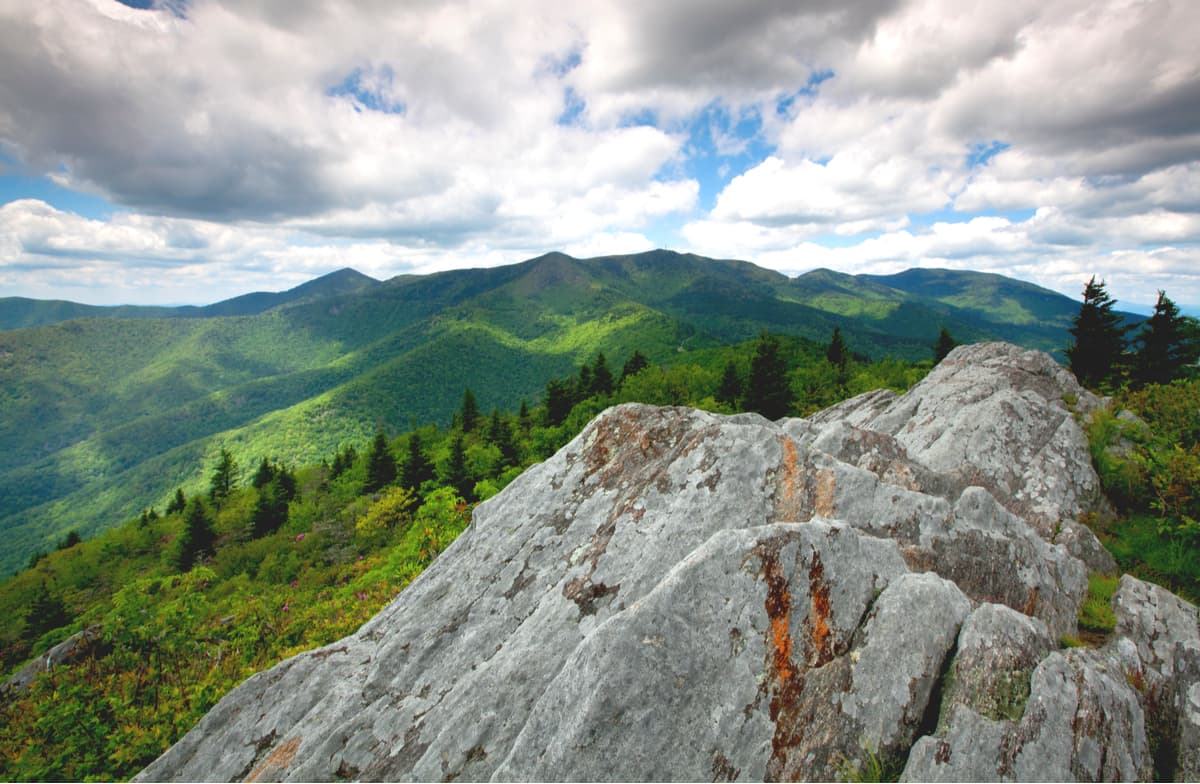
For skiing and snowboarding enthusiasts, there are more than 5 ski resorts in North Carolina.
There are no ski resorts near Charlotte, the capital of the state, they all are located on its western border with Tennessee and Kentucky. The two largest ski resorts of about the same size are Beech Mountain Resort and Sugar Mountain Resort with more than 14 km (9 mi) of slopes and more than 5 ski lifts each. So the other areas for skiing in North Carolina are smaller.
Check the North Carolina ski resorts map and the larger USA ski resorts map in the World Mountain Lifts section of the site. It includes information about open ski lifts / slopes in North Carolina in real-time with opening dates and hours. There are also year-round cable cars, funiculars, cog railways, aerial tramways, and all other types of mountain lifts.
At 125 skiable acres, Sugar Mountain boasts the largest ski area in North Carolina. The park features a 1,200-foot vertical drop, 21 slopes and trails, and a terrain park. There are plenty of options for both novice and experienced skiers, making it ideal for families and first timers. During the summer, Sugar Mountain transforms into a premium destination for mountain biking and hiking. The base lodge is the perfect place to kick back and grab a bite to eat, and just down the road, Banner Elk offers a variety of accommodations and facilities.
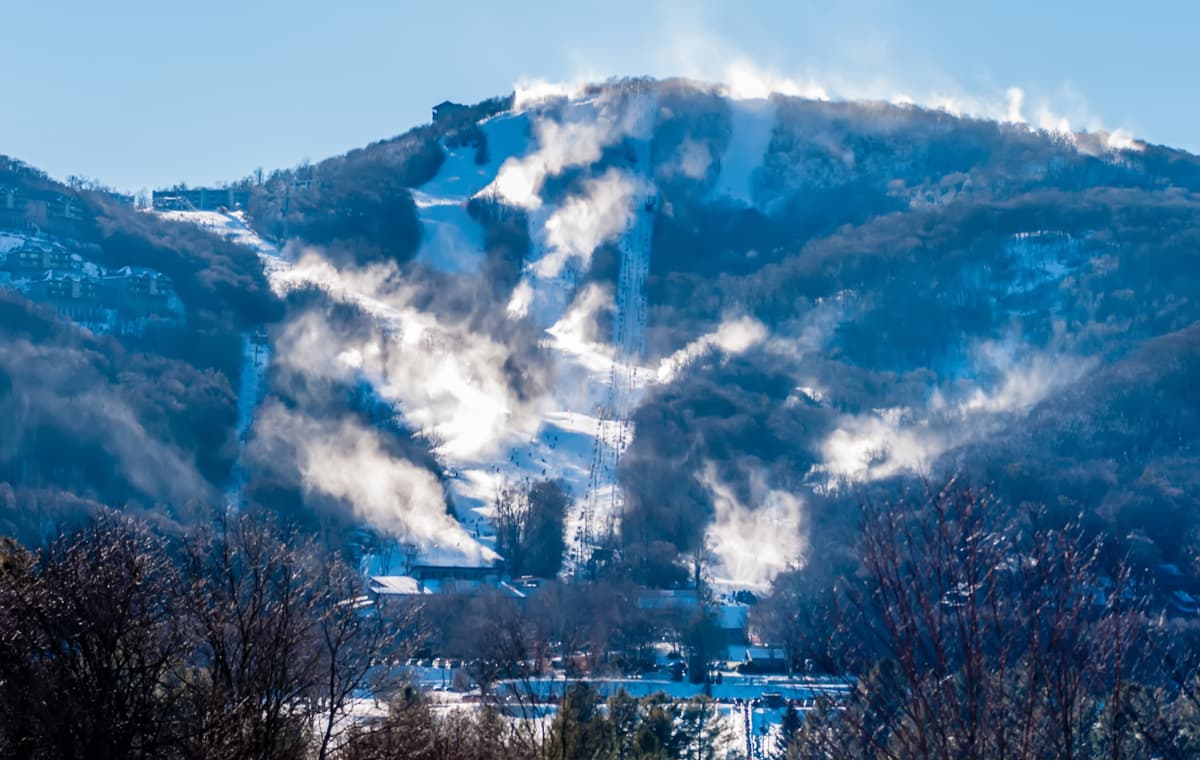
Known as the gateway to the Blue Ridge Mountains, Asheville is a vibrant community that sits just over an hour from Great Smoky Mountains National Park. The city sits along the scenic Blue Ridge Parkway and boasts a variety of hotels, cabins, charming bed and breakfasts. Whether you want to hop on the Appalachian Trail, drive the Blue Ridge Parkway, float the French Broad River, or explore the Biltmore Estates, a hundred-year-old property, Asheville is the ideal North Carolina vacation destination.

Another gem of the Blue Ridge Parkway, Little Switzerland is known to embody the heart and soul of western North Carolina. The town, which was originally built as a resort village, is home to the world-famous Diamondback and Murder Mountain runs, a group of 12 historic mines, the Grassy Creek Waterfall trail, and Crabtree Meadows Recreation Area. Little Switzerland’s proximity to the Blue Ridge Parkway and charming accommodations make it a perfect place to stay while exploring the Blue Ridge Mountains.
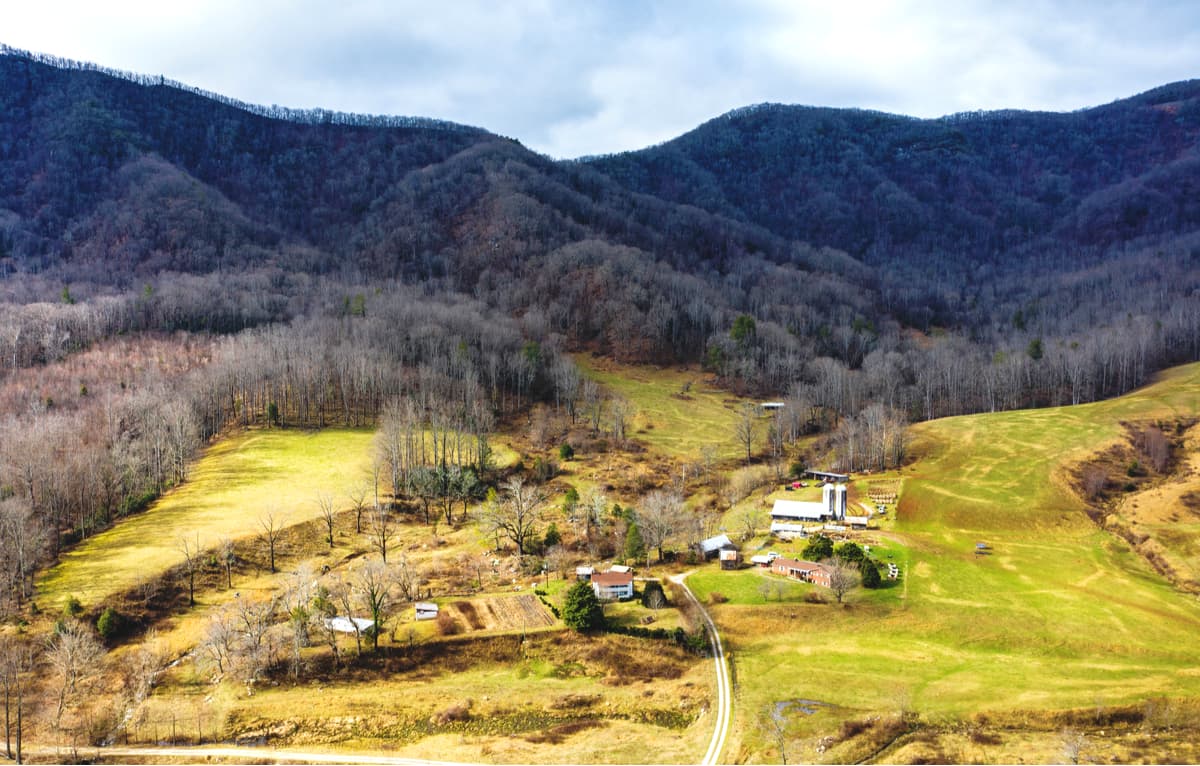
Explore North Carolina with the PeakVisor 3D Map and identify its summits.








ultra
southern-appalachian-6000ers
nc-5000ers
south-beyond-6000
carolina-lookout-tower-challenge
southern-appalachian-6000ers
nc-5000ers
tennessee-4500ers
south-beyond-6000
carolina-lookout-tower-challenge
fred-beckey-great-peaks
southern-appalachian-6000ers
nc-5000ers
tennessee-4500ers
south-beyond-6000
ultra
southern-appalachian-6000ers
nc-5000ers
south-beyond-6000
carolina-lookout-tower-challenge
southern-appalachian-6000ers
nc-5000ers
tennessee-4500ers
south-beyond-6000
carolina-lookout-tower-challenge
fred-beckey-great-peaks
southern-appalachian-6000ers
nc-5000ers
tennessee-4500ers
south-beyond-6000
